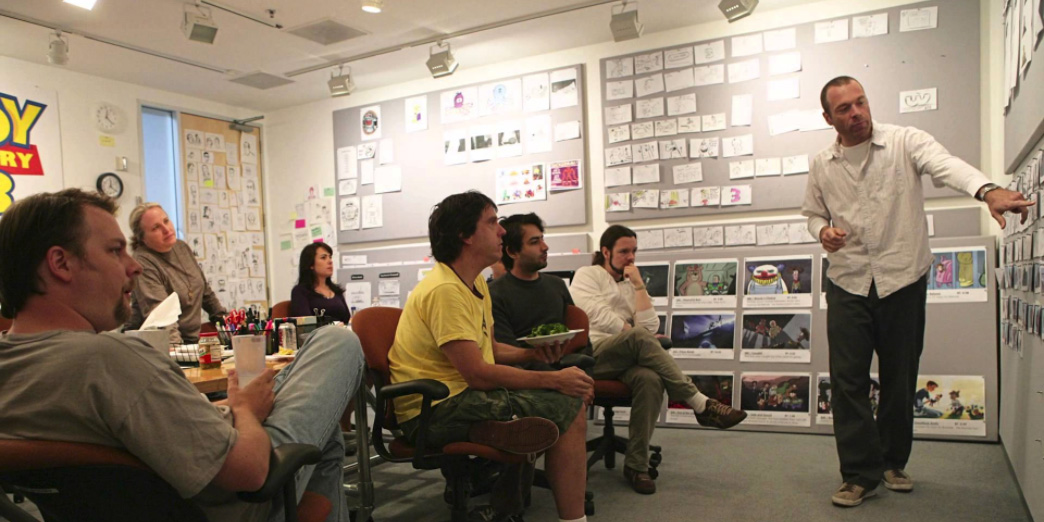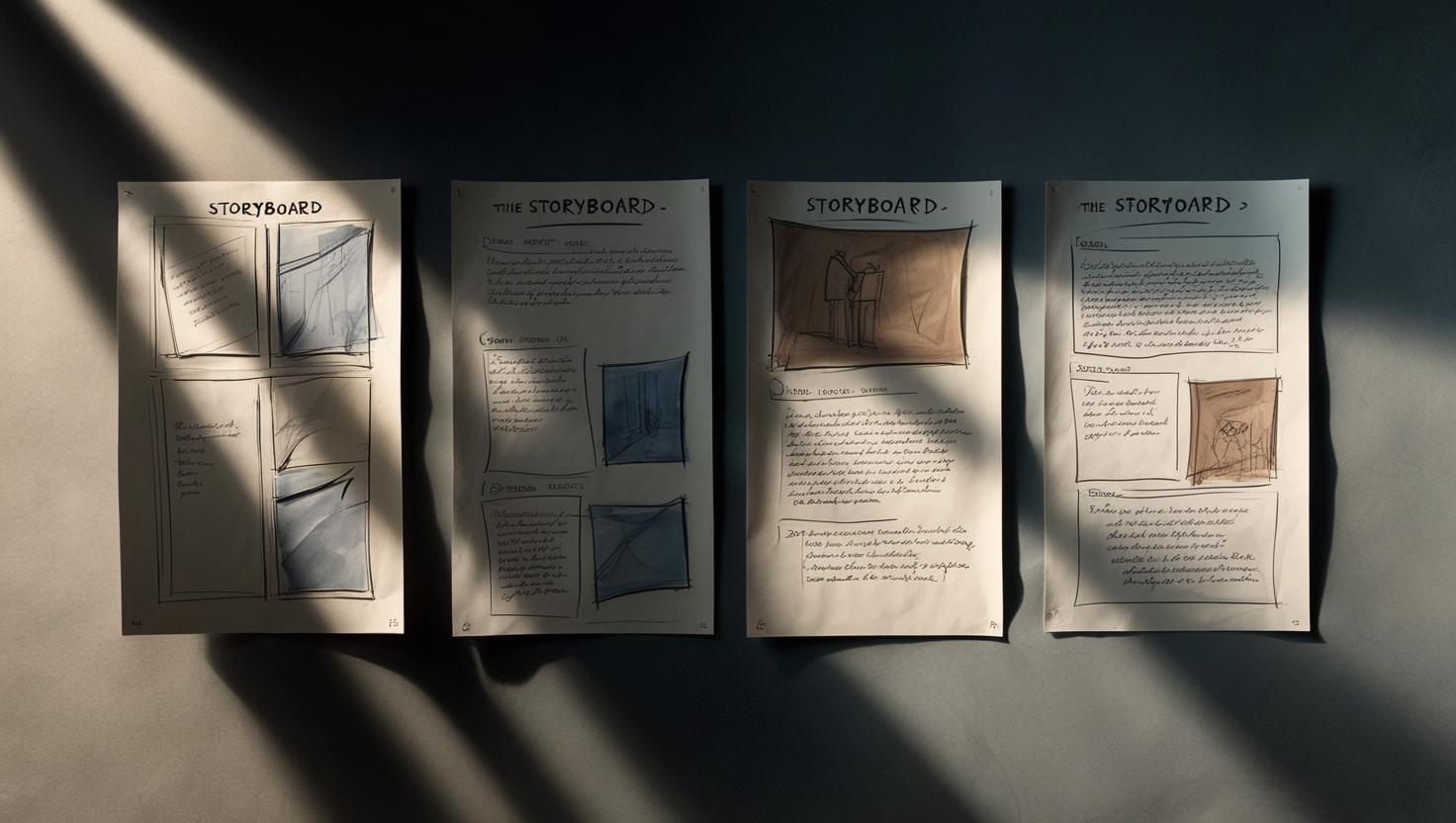Whether you’re a producer, director or animator – at the end of the day, you’re a video professional telling a story. A storyteller. In words, in storyboards, in shots, in animations. But when you’re working on a production you’re rarely alone, you work in combination with many other disciplines. So, how do you get the best out of everyone? At Pixar they have the answers! These are the lessons they can teach us.
Pixar, producers of Toy Story, Monsters Inc., Cars, Finding Nemo and recently, Coco. How do they manage to bring out innovative films which, time and again, stand out for their plot, humour and visual brilliance? The whole organisation is set up to optimise creativity, innovation and the internal collaboration between the different disciplines. Only in this way can they do justice to the many varied qualities of the professionals at Pixar. And you can see the results./p>
The creative booby traps for a multidisciplinary team
We all know that we can achieve more with a good team. But… working with more people doesn’t always mean things get easier. There is a lot of work to get through, deadlines need to be met, there is never enough time or money (even at Pixar) – and everyone has loads of different ideas. How do you make sure that the creative process, with all these top talents, each with their own vision, doesn’t turn into a battlefield?
At Pixar they are the masters of boosting in-house creativity. So, we have put together a number of their lessons for you.
These are the top 5 tips from Pixar to help streamline your creative process
1. No idea is too crazy
Pixar’s “Braintrust sessions” are famous, because in these creative meetings no idea is too crazy, and all participants can bring their own particular expertise to bear. In the clip below, Pixar legend Ed Catmull explains how these Braintrust sessions work. Make sure you have a socially safe space for the meeting, where original ideas can be aired, without being immediately shot down. Try and get the professionals involved in the project together around the table and really listening to each other. Bring the client in on the process. As client they need to understand every step you take. So, according to Pixar: listen to each other and don’t criticise each other’s ideas straight away.
2. Trust each other
In every process things occasionally go wrong, but it does a team good to together create an environment where it is safe for everyone to take risks. Trust in each others qualities and intentions is vital. Extend this open-mindedness towards one another and inject it into the whole working process. Know that constantly trying to avoid all risks often costs more time than it would take to repair a mistake. Make sure that the process doesn’t get stuck in small details, but rather that everyone keeps the bigger picture in mind. Here too: include the client in this open-minded work process. Thanks, Pixar, we’ll trust each other.
3. Keep the tempo up
Nothing is so deadly to a creative session as: “OK, interesting. Give me two days and I’ll come back to you!” All the collective energy that you’ve built up in the meeting is killed off instantly, and the one who came up with the idea is sidelined – together with other colleagues that perhaps had something to add. According to Pixar then: keep the tempo up and try to shift gear quickly and smoothly.
4. Use tools that help you visualise ideas
Make sure you are using good technical tools that allow all team members to show their ideas, and which allow colleagues to give direct feedback. Michael B. Johnson is a software-programmer who makes tools for Pixar, which allow different creatives to showcase their ideas in the best possible way. Whenever team members have the tools in their hands to make the invisible tangible, people understand each other quicker. This leads to better insights and unexpected cross-pollination between disciplines. Without good technical tools then we just won’t get there.
5. 1+1 = 3
An obvious one. Make sure that you have the best people in your team. Or at least professionals that you really trust in their specialism. A mediocre team can ruin a brilliant idea. If you don’t trust in the qualities or intentions of someone, then they don’t belong on the team. You need to all be, more or less, on the same level. A fantastic team can fix an average idea, or during the process will come up with something else. Something better.
Great then… oh, one more:
6. Learn from your mistakes, repeat your successes
One of the most famous Pixar management sessions is the “Post-mortem”. The film is finished. Everyone is done. And, while everyone is enjoying a rest, each team member needs to name five things they would do the same way again, and five that they would take a different approach to next time. It’s a way to let everyone explore their own successes. Because everyone makes mistakes and at Pixar these can (must!) be named, space is created for a fair and delicate analysis of the creative process that comes part and parcel of a complex production.
Conclusion: Listen to each other, be open to all ideas. Trust each other. Don’t leave tasks for days, but keep the tempo up. Having the best people in your team, and giving them the right tools to visualise ideas, will help you achieve more. Learn from each others mistakes and repeat successes. And last but not least: include the client as much as possible in the brainstorm sessions, even if it’s just for good form. You will at least make sure that they too stick to the ‘team rules’ 🙂
Want more to read? Find all of our ebooks here:
Persuasive script writing tips
Do’s and don’t’s of in-house audio production
23 tips: here’s how to increase your submission’s chance of a film festival win
What to look for in a voice over who works remotely – A practical checklist for working with a voice actor online
E-Learning courses with impact – 20 practical tips for creating an effective e-learning course
P.S. Can’t get enough of Pixar?
Then read Pixar’s book: “Creativity Inc.“




